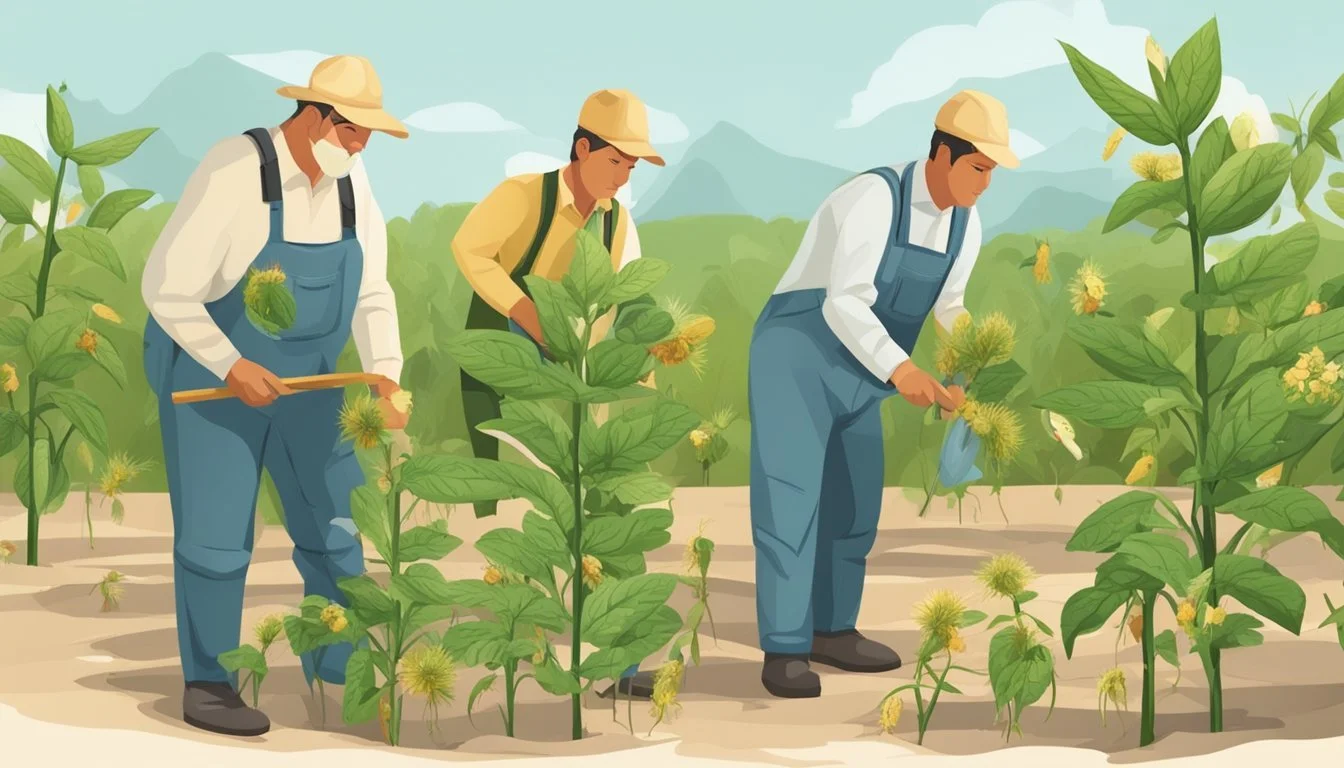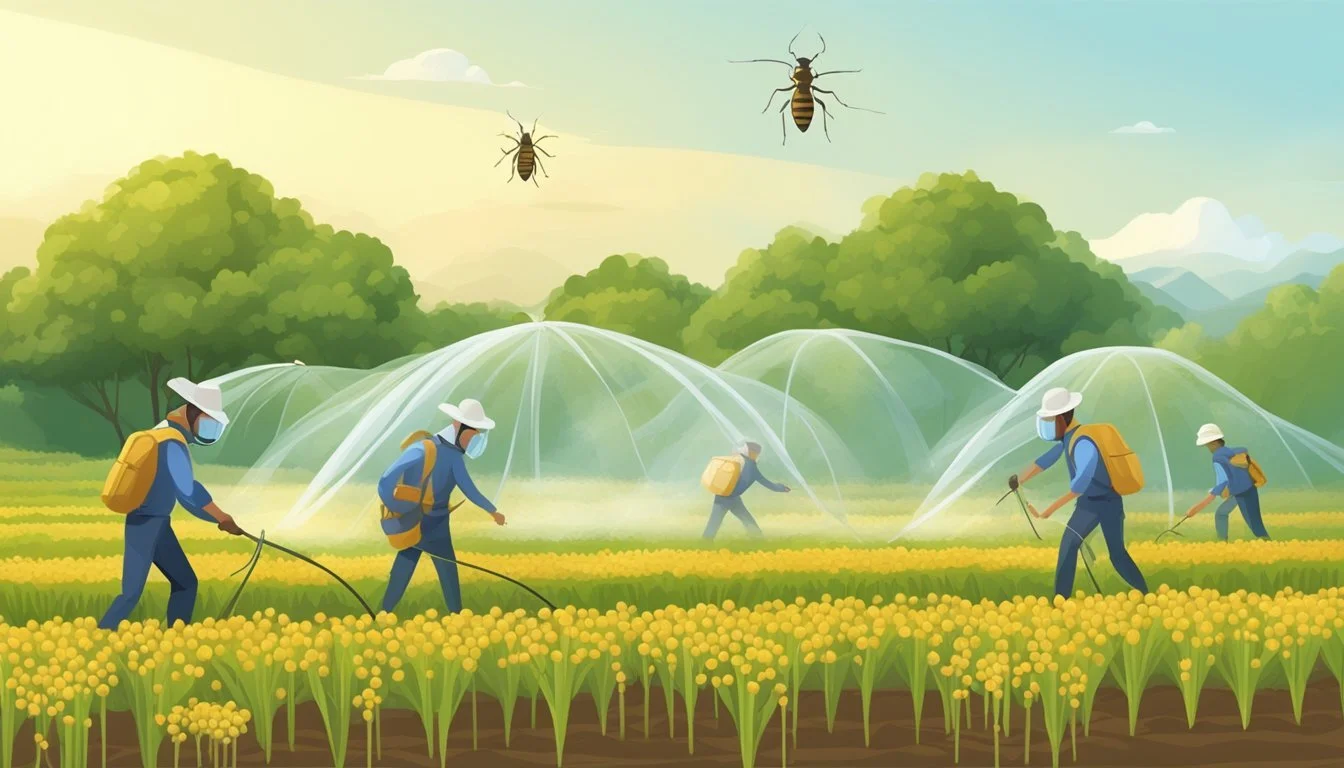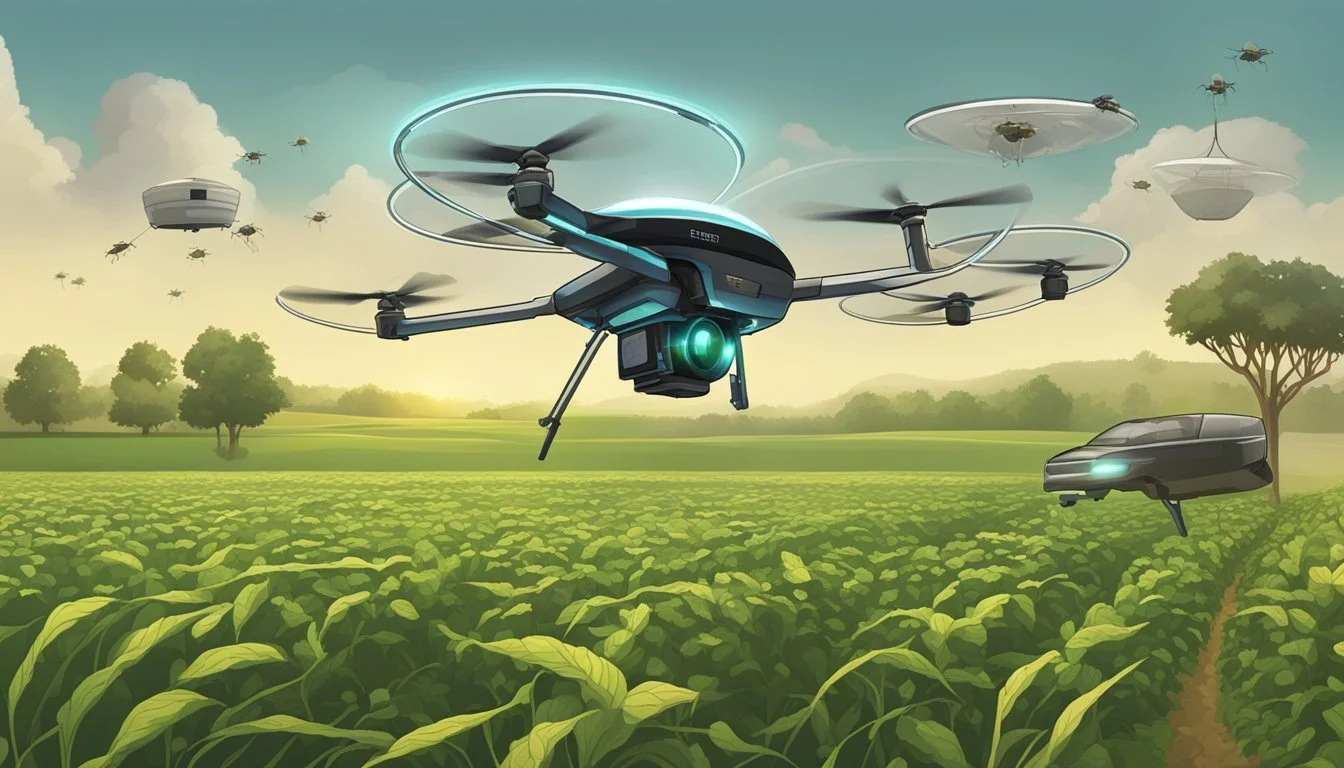Protecting Crops from Seed Bugs
Effective Strategies for Pest Management
Protecting crops from seed bugs is a significant concern for farmers and gardeners alike, as these pests can cause considerable damage to emerging seedlings. The challenge begins right from the moment seeds are planted in the soil, as seed bugs seek out these nutritious resources for their consumption. Left unchecked, seed bugs can decimate a crop before it even has a chance to grow, leading to financial losses and reduced yields. The use of various protective strategies is essential to safeguard seeds during their most vulnerable stages, from sowing until they mature into healthy plants.
As seed bugs continue to pose a threat to agricultural productivity, researchers and agriculturalists have developed multiple methods to deter and control these pests. Strategies range from physical barriers, such as seed coverings or row covers, to biological controls that target the seed bugs without harming the environment. Chemical measures, like insecticides, are also employed, but they come with considerations regarding safety, resistance, and regulations. Integrated Pest Management (IPM) approaches combine these methods for effective control, aiming to reduce reliance on any single tactic and promote sustainable crop protection.
Understanding Seed Bug Types and Behaviors
In the combat against crop damage, understanding the distinct characteristics and behaviors of various seed bugs is critical. Knowing their life cycles and seasonal infestation patterns assists farmers in developing effective management strategies.
Characteristics of Common Seed Bugs
Callosobruchus maculatus, also known as the cowpea weevil, and Sitophilus oryzae, the rice weevil, represent two prevalent seed bug types that impact crops like corn and rice. Callosobruchus maculatus is characterized by its smooth, dome-shaped body and dark spots on its elytra, while Sitophilus oryzae tends to be cylindrical with a snout that aids in penetrating grains.
Typical Behaviors and Life Cycles
Seed bugs, including weevils, exhibit specific behaviors consistent with their respective life cycles. For instance, rice weevils (Sitophilus oryzae) undergo complete metamorphosis where they progress from egg to larva, pupa, and then to adult, preferring to lay their eggs inside whole grain kernels. Similarly, weevil larvae usually feed internally, causing significant damage to seeds and grains such as corn.
Seasonal Patterns of Infestation
These pests are known to be more active during certain seasons. For example, Callosobruchus maculatus often infests crops post-harvest, seeking stored grains to lay eggs. Weevils, on the other hand, might infest crops at any point if the conditions are favorable, with increased activity noted typically in warmer months due to the heat accelerating their life cycles.
Impact of Seed Bugs on Crops
Seed bugs can significantly affect the health and yield of crops. They target seeds and seedlings, impacting both the quantity and quality of the agricultural produce. Below is a detailed overview of how these pests influence crop production.
Effect on Germination and Seedling Development
Seed bugs are known for their detrimental effects on germination and early seedling development. By feeding on seeds and emerging seedlings, they reduce the vigor and growth potential of plants. This can lead to poor stand establishment in fields, ultimately impacting the plant's ability to develop and mature properly.
Potential for Disease and Pathogen Spread
The interaction of seed bugs with crops often increases the vulnerability of plants to disease and facilitates the spread of various pathogens. As they pierce plant tissues, these insects can introduce or disseminate fungal, bacterial, or viral agents, threatening not only individual plants but entire fields.
Economic Losses to Farmers and Food Security
The presence of seed bugs in agricultural systems often translates into economic loss for farmers due to reduced crop yields and increased control costs. In severe cases, the livelihood of farmers can be jeopardized, and food security may be compromised, especially in regions heavily reliant on agriculture. The economic impact of seed bugs can escalate when considering the long-term effects on perennial crops and commercial seed production.
Preventive Measures and Crop Protection
Proactive strategies in agriculture are essential to mitigate the impact of seed-infesting pests. It involves a combination of cultivation practices, informed crop rotation, and the application of treatments and coatings to seeds. These actions form a multifaceted defense against potential yield losses caused by seed bugs.
Cultivation Practices to Deter Seed Bugs
Farmers can adopt various cultivation practices to discourage the presence of seed bugs. Integrating beneficial insects into the ecosystem can significantly contribute to natural pest management. For example, ladybugs and lacewings are natural predators of many seed pests. Additionally, strategic planting of crops that are less attractive to pests, or even trap crops that divert pests away from the main crop, can be a part of an effective defense strategy against seed bugs.
Importance of Crop Rotation and Diversity
Crop rotation is a time-honored practice that aids in disrupting the life cycle of seed bugs. By alternating the types of crops grown in a specific area, it creates a less hospitable environment for pests that may have adapted to one particular kind of plant. Further, incorporating crop diversity within the same growing season can reduce the chances of a pest outbreak, as different plants may attract different beneficial insects or be resistant to certain seed bugs.
Seed Treatments and Protectant Coatings
Seed treatments have been acknowledged as a vital component of crop protection. A targeted application of pesticides to crop seeds shields crops from damaging pests and diseases during their most vulnerable stages of development. Moreover, the use of seed coating technologies not only provides a protective barrier but may also enhance germination and seedling growth. These treatments and coatings can effectively reduce the need for more aggressive interventions post-planting, resulting in a more sustainable approach to crop management.
Pest Management Approaches
Effective pest management is critical for protecting crops from seed bugs. Farmers and agricultural professionals can choose from an array of strategies ranging from chemicals to biological controls, each with different mechanisms of action.
Chemical Control: Pesticides and Insecticides
Chemical control is a widely used approach involving pesticides and insecticides to mitigate pest populations. Chemicals specifically designed to target seed bugs must be applied in accordance with safety guidelines to minimize the risk to other organisms and the environment. The use of seed protection methods is informed by ongoing research aimed at improving the effectiveness and environmental soundness of pest management approaches.
Biological Control Strategies
Biological control employs beneficial insects, like ladybugs, to naturally reduce pest populations. This method promotes the use of predators or parasitoids that attack seed bugs. It emphasizes the maintenance of an ecological balance and reduces the reliance on chemical interventions. Studies have shown that diverse cropping systems can encourage the presence of such beneficial insects, aiding in natural pest management.
Integrated Pest Management (IPM) Principles
Integrated Pest Management (IPM) is a comprehensive approach combining multiple strategies to control pests sustainably. It includes regular monitoring of pest levels, use of pesticides as a last resort, and implementation of biological control methods. IPM aims to reduce the impact on non-target organisms and the environment. The principles of IPM provide a framework for implementing ecologically and economically feasible methods for long-term pest control.
Innovative Detection and Monitoring Techniques
Emerging technologies are transforming the landscape of pest control in agriculture. These innovative detection and monitoring techniques focus on early identification and prompt action, which are critical in protecting crops from seed bugs.
Advanced Identification Methods
Advanced identification methods leverage technology to enhance accuracy and speed in detecting seed bugs. For instance, the integration of remote sensing imagery and geospatial image processing through unmanned aerial vehicles (UAVs) allows for efficient surveillance over large areas. This approach employs sophisticated sensors such as hyperspectral, multispectral, and digital RGB to quickly identify areas of infestation. Further reinforcing these methods is the use of automated insect monitoring, which streamlines the collection and analysis of data for better decision-making.
Utilizing Traps and Scouting
Traps form a cornerstone in the monitoring and control of seed bugs. Phytochemical lures, for example, attract specific parasitoids or predators that can help control seed bug populations. By using sticky traps or pheromone traps, farmers can gain insight into the presence and quantity of pests within a given area. Additionally, consistent field scouting remains a valuable tool for early detection, providing the opportunity to implement control measures before seed bugs can cause significant damage. Regular inspections also facilitate the integration of biological control strategies, such as releasing parasitoids that target and suppress seed bug populations.
Through these strategic approaches, farmers and agricultural professionals can achieve effective monitoring and management of seed bug infestations, safeguarding crop health and productivity.
Natural and Organic Options
When exploring natural and organic methods to protect crops from seed bugs, gardeners have several effective options. These options are not only environmentally friendly but can also be quite potent in keeping seed bugs at bay without the use of synthetic chemicals.
Botanicals and Essential Oils
Botanicals and essential oils are a cornerstone of organic pest control. Compounds like neem oil are extensively utilized for their insecticidal properties. Neem oil, an extract from the seeds of the neem tree, acts as a powerful natural insecticide that is safe to use on plants and effective against various pests, including seed bugs. Other essential oils such as peppermint, eucalyptus, and citronella can also repel pests when diluted and applied to the foliage of crops.
Biological Agents like Bacillus thuringiensis
Among the biological control methods, Bacillus thuringiensis (Bt) is a widely accepted bacterium that targets insect larvae. Products containing Bt spores can be sprinkled over plants, where they release a toxin upon consumption that is fatal to the larvae of seed bugs and other pests, yet safe for humans and non-target wildlife. This agent breaks down quickly in nature, which underscores its organic suitability.
Using Physical Barriers and Row Covers
Physical barriers provide an immediate and effective line of defense against seed bugs. Row covers, made from lightweight fabric, are draped over crops to protect them from a range of insects. They allow air, light, and water to reach the plants while excluding pests. Secure row covers at the edges to prevent bugs from entering, and as an added benefit, these covers help regulate temperature, extending the growing season for your crops.
Utilizing these natural and organic options, farmers and gardeners can protect their crops efficiently, endorsing sustainable practices that are in harmony with the ecosystem.
Storage and Post-Harvest Protection
After harvest, the primary concern is the protection of stored grain from pests such as grain moths and seed bugs. Effective storage conditions and treatments are critical to prevent losses and maintain grain quality.
Maintaining Optimal Storage Conditions
It is essential to ensure that storage facilities are both clean and dry before introducing new harvests, as pests thrive in moist and untidy environments. The storage conditions must account for:
Temperature: Kept low to prevent insect activity.
Moisture: Levels need to be minimized, typically below 14% for grains, to inhibit the growth of fungi and pests.
Regular inspection and management of humidity and temperature are required to avoid the infestation of storage pests. For grains particularly vulnerable to grain moths, vigilance in these controlled conditions is paramount.
Treatments for Stored Grain and Prevention
Before placing grain in storage, it can be beneficial to treat it with approved post-harvest pesticides as a preventive measure. The selection of pesticides must comply with organic standards, which typically do not allow synthetic ingredients for post-harvest pest control. For instance, inert ingredients in pest control materials must be either allowed or be non-synthetic according to organic guidelines.
In addition, consider these preventive actions:
Clean Harvest Equipment: Ensure all equipment is free from pest residues.
Sanitize Storage Facilities: Before storing new grain, thoroughly clean silos or bins.
By implementing vigilant storage protocols and preventive treatments, one can effectively protect the quality and integrity of stored grain from common pests.
Legislation and Best Practices
Effective management of crop pests, such as seed bugs, is crucial for agricultural sustainability. Legislative measures and best practices are designed to ensure both crop health and ecosystem balance.
Standards and Regulations
The United States Department of Agriculture (USDA) plays a pivotal role in overseeing pest management standards and regulations. They ensure these are aligned with both federal laws and sustainability goals. For instance, the USDA collaborates with the Environmental Protection Agency (EPA) to implement policies that safeguard pollinators from pesticide exposure while fostering practices that minimize harmful impacts.
Pesticide Regulations: Policies are in place to control pesticide use, focusing on the protection of both crops and pollinators.
For agricultural pesticide spray, the EPA has implemented a policy in 2017 that lays out clear guidelines for the applications.
The collaboration with states and tribes to develop pollinator protection plans is recommended.
Promoting Sustainable and Effective Strategies
The promotion of sustainable and effective strategies involves integrating best practices that address pest management while preserving environmental health.
Integrated Pest Management (IPM): This strategy combines different management approaches with the aim of using the least environmentally damaging solutions to prevent excessive crop damage by pests like seed bugs.
Best Management Practices (BMPs): They include cultural, physical, and biological controls that reduce the reliance on chemical pesticides.
Examples of BMPs might involve rotating crops, selecting pest-resistant plant varieties, or introducing natural predators to combat seed bugs.
The EPA hosts webinars and summits to disseminate information on responsible pesticide use and IPM strategies.
By adhering to these standards and embracing sustainable practices, farmers can protect crops from pests such as seed bugs while minimizing environmental impact and bolstering the ecosystem's health.
Frequently Asked Questions
In tackling seed bug infestations, farmers often seek strategies that balance effectiveness with ecological consideration. This section addresses common concerns with preventive and curative approaches to protect crops right from the seed stage.
How can farmers naturally prevent seed bugs from damaging crops?
Farmers can deter seed bugs by promoting biodiversity, as certain plants can repel pests naturally. Crop rotation and intercropping with these plants can create an unfavorable environment for seed bugs.
What are effective organic pest control methods for seed bug infestations?
Organic pest control methods include the use of neem oil, which acts as an antifeedant, or diatomaceous earth, a natural abrasive that damages the exoskeleton of seed bugs.
What are the non-chemical ways to protect plant seeds from being eaten by pests?
Physical barriers, such as floating row covers, can shield seeds from pest intrusion. Soil solarization, a process of using solar energy to heat the soil, can also reduce the population of soil-dwelling seed bugs.
What are some common drawbacks of using seed coatings as a pest deterrent?
While seed coatings can offer protection against pests, they may also affect seed germination rates and can be costly. In some cases, seed treatments may not be effective for all pests, especially if not correctly applied.
Are there any natural predators that can help control seed bug populations in agricultural settings?
Yes, natural predators such as lady beetles, lacewings, and spiders can reduce seed bug numbers. Encouraging these beneficial insects can be achieved through habitat enhancement and avoiding broad-spectrum insecticides.
How does the timing of planting affect the vulnerability of seeds to bug infestations?
Planting seeds when the conditions are less favorable for seed bugs can reduce the risk of infestation. Adjusting planting schedules to avoid peak seed bug activity is a practical non-chemical approach to protect young crops.







